The Release Date for PS5: A Detailed Exploration

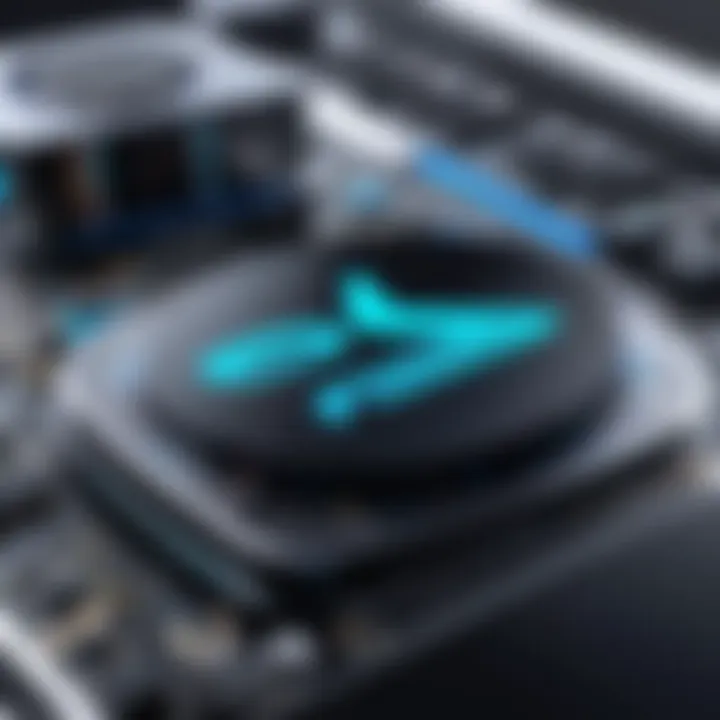
Intro
The release of the PlayStation 5 (PS5) marked a significant milestone in the gaming industry. The gaming community anticipated the launch, eager to witness the next step in console evolution. Understanding the release date is crucial, as it set the stage for market dynamics and developer strategies.
As one examines the PS5's release, it becomes clear how it transformed user experience and expectations. From pre-launch speculation to the actual unveiling, the context surrounding its release offers insight into how the PlayStation brand has adapted and thrived in a competitive market.
Key Features
Design and Build Quality
The PS5 presents a bold aesthetic, characterized by its sleek lines and distinctive white casing. The console stands out compared to its predecessors, appealing to a modern audience. It features a larger size, designed not only for visual impact but also for functionality.
Cooling is a priority in the design. The PS5 incorporates advanced heat management systems, which are essential for maintaining performance during intensive gaming sessions. The combination of design and engineering enhances not only its looks but also its longevity and reliability.
Display and Performance
One of the strong points of the PS5 is its emphasis on high performance designed for 4K gaming. It not only supports ray tracing but also offers frame rates up to 120 frames per second. This represents a significant leap from earlier systems and illustrates the thoughtful engineering behind its development.
Furthermore, the DualSense controller enhances the gaming experience with adaptive triggers and haptic feedback, resulting in a more immersive feel. This blend of hardware innovation and design makes the PS5 stand out in a crowded market.
Product Specifications
Technical Specifications
The PS5 operates on a custom AMD processor featuring an eight-core CPU and a GPU capable of producing stunning graphics. The architecture allows for fast load times, thanks to the ultra-high-speed SSD.
- CPU: AMD Zen 2
- GPU: RDNA 2
- RAM: 16 GB GDDR6
- Storage: 825 GB SSD
- Backward compatibility: Most PS4 games supported, enabling a smooth transition for gamers.
Compatibility and Connectivity
The PS5 supports HDMI 2.1, facilitating high-definition connections and providing improvements in refresh rates. Wireless connectivity options include Bluetooth 5.1 and Wi-Fi 6, ensuring seamless connections to various devices.
Integration with services like PlayStation Now and PlayStation Plus enhances the gaming experience by offering access to a library of games and exclusive features. This reflects the ongoing emphasis on creating a robust ecosystem for developers and gamers alike.
"The successful launch of the PS5 was not only about providing a new console but redefining gaming excellence."
Prelude
The release date of the PlayStation 5 represents a pivotal moment in the gaming industry. This section will explore why this date is significant not only for consumers but also for developers and stakeholders alike. An understanding of the launch details sets the stage for examining how the PS5 has influenced the gaming landscape.
PlayStation's history is interwoven with technological advancements, consumer expectations, and market competition. Knowing when the PS5 was released reveals insights into its anticipation and the surrounding context within the gaming community. As the industry evolved, the expectations for new consoles shifted dramatically. Players became more discerning about hardware capabilities, exclusives, and backward compatibility. The PS5’s release date thus serves as a critical marker in understanding the progression of gaming technology and consumer behavior.
The article will also address how the timing of the PS5 launch affected its performance in the market. Significant moments like this can create ripples that affect developer strategies, game releases, and sales figures. By dissecting the implications of the PS5's launch, it becomes clear that its release extended far beyond the simple introduction of a new console; rather, it marked a new chapter in the ongoing evolution of the PlayStation brand.
This exploration will deepen the reader's knowledge of the PS5’s impact on the gaming culture while offering a comprehensive look at its timeline and context. It will illuminate various dimensions of this event, enriching the understanding of what the PS5 launch means for the future of gaming.
Overview of PlayStation Brand
The PlayStation brand, established in the mid-1990s, has become synonymous with quality and innovation in the gaming world. What started as a collaboration between Sony and Nintendo developed into a revolutionary platform that redefined gaming experiences. Over the years, the brand has released multiple consoles, each setting new standards for graphics, gameplay, and interactivity.
Significant milestones in the PlayStation journey include the release of the original PlayStation in 1994 and the subsequent launches of the PlayStation 2, PlayStation 3, PlayStation 4, and ultimately the PS5. Each console introduced unique features that contributed to its success and sustained popularity.
PlayStation is recognized not just for its hardware but also for a rich library of games. Exclusive titles such as "Final Fantasy," "Gran Turismo," and "The Last of Us" have influenced the gaming experience significantly. The brand has mastered the delicate balance of technological advancement and consumer demand, creating a loyal base of players eager for the newest innovations.
The release of the PS5 is another chapter in this storied legacy, emphasizing an ongoing commitment to pushing the boundaries of gaming technology. By the time the PS5 was announced, excitement had reached fever pitch among fans. Expectations were meticulously curated, paving the way for a strong reception. Understanding such elements helps contextualize the PS5's release within the larger narrative of the PlayStation brand.
Timeline of PS5 Development
The timeline of the PlayStation 5's development serves as a complex, intricate narrative that showcases the dedication of Sony towards creating a next-generation gaming console. This timeline is not only crucial for understanding how the PS5 came into existence, but it also reflects the broader trends in the gaming industry. With the development spanning several years, various phases encapsulate critical milestones from initial concept to the final product launch.
The timeline reveals key decisions, technological advancements, and market adaptations. It encapsulates the mounting excitement and anticipation surrounding the PS5's release, while also laying bare the challenges faced throughout its journey. The synthesis of consumer feedback, technology trends, and competitive analysis vastly contributed to shaping the PS5's design and features, ensuring it would stand as a formidable player in the gaming console arena.
Initial Announcements
The initial announcements surrounding the PS5 stirred considerable buzz in the gaming community. Sony first hinted at the new console during a corporate strategy meeting in late 2018. This marked a pivotal moment for both Sony and its followers. Fans were eager for any information regarding the successor to the PlayStation 4. Eventually, Sony officially revealed the PS5 in June 2020—a significant event streamed live with extensive multimedia content showcasing the console’s design, features, and some anticipated game titles.
Among the highlights were its unprecedented capabilities, leveraging SSD storage for faster load times and enhanced graphics via ray tracing technology. Therefore, the announcements set the stage for enthusiasm and speculation in gaming forums and social media platforms, shaping consumer expectations well before the actual release.
Development Phases
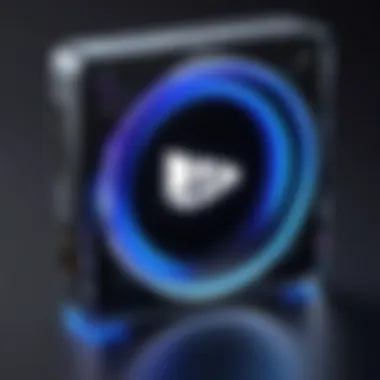
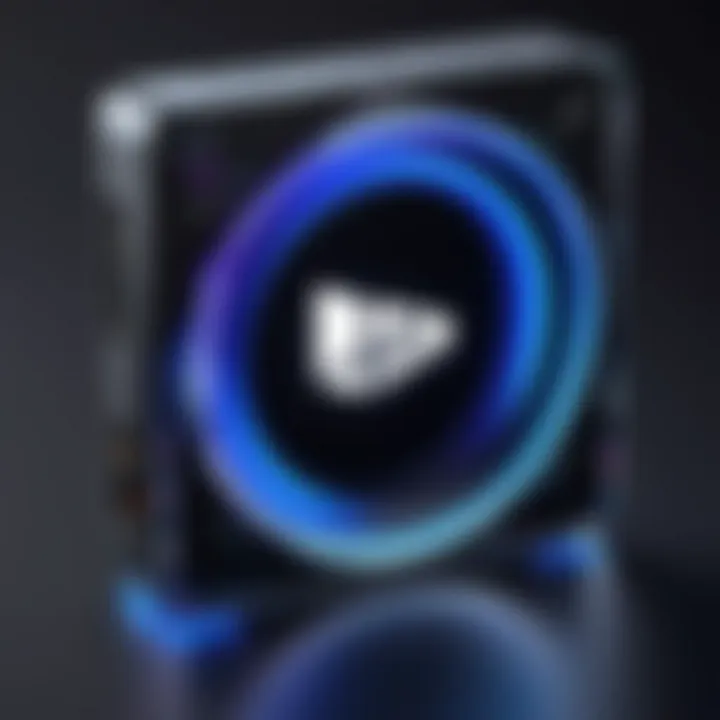
The development phases of the PS5 were a meticulous orchestration of technology and consumer needs. Following the announcements, the focus shifted to the technical development of the console. Different teams within Sony collaborated closely to address graphical performance, processing power, and backward compatibility.
Throughout 2019 and 2020, the console went through rigorous testing and refinement. Notably, the decision to prioritize user experience and community feedback played a crucial role. This included optimizing the DualSense controller, incorporating haptic feedback and adaptive triggers that vastly changed gameplay immersion.
"The development of the PS5 is proof of how listening to the gamer community can yield a product that feels as much a part of its users' experiences as it is a piece of hardware."
In parallel, the release strategies were crafted to ensure accessibility while managing supply chain considerations. As competition in the gaming market intensified, every step in this phase was critical—each decision resonated with the future performance of PlayStation as a brand.
In summary, the timeline of PS5 development is indicative of Sony’s commitment to innovation and consumer-centric design, enabling it to maintain relevance in a rapidly changing gaming landscape.
Pre-Release Expectations
Anticipation shapes product releases, especially in the gaming industry. The period before the PlayStation 5's launch was marked by high consumer interest and eagerness. Expectations were not just about the console's technical capabilities but also about its potential to redefine gaming experience. This phase saw various factors contributing to the excitement around the PS5.
Consumer Anticipation
The consumer perspective during the PS5's pre-release was intricate. Gamers engaged actively in discussions on platforms like Reddit and Facebook, sharing leaks and speculative information regarding features and design. Many expressed eagerness for backward compatibility with previous PlayStation titles, which became a crucial point in customer satisfaction. Furthermore, the aesthetics of the console, highlighted in trailers and promotional material, drove conversation within gaming communities.
This buzz was not limited to casual gamers. Serious enthusiasts and tech-savvy individuals scrutinized the specs, often comparing them to competitors. The culmination of these discussions led to a growing sense of community among gamers, as they united in anticipation of the release.
Industry Predictions
Industry experts made varied predictions about the PS5's impact on the market. Analysts observed trends in consumer behavior and noted the mounting shift towards high-performance gaming hardware. Some predicted significant sales figures, anticipating a robust launch due to extremely positive consumer sentiment. These predictions were supported by the expectation of exclusive game titles that would be available only on PS5.
Furthermore, the competitive landscape was shifting post-launch of Xbox Series X. Analysts contemplated how players would balance their preferences between the two consoles, focusing on unique offerings such as hardware capabilities and game libraries. This market analysis not only shaped expectations but also set the stage for critical comparisons between Sony and Microsoft, fundamentally altering the landscape in which consoles were viewed and valued.
"The PS5 is not just another console; it’s a statement about where gaming is heading."
Official Release Date
The official release date of the PlayStation 5 represents a critical milestone not only for Sony but for the entire gaming industry. This date is etched into the memory of enthusiasts and industry analysts alike. Understanding this moment is key to grasping the evolving landscape of the console market. The anticipation surrounding a release date is often a mixture of excitement and speculation, impacting both consumer behavior and market strategies.
Global Release Schedule
The PS5 was officially launched on November 12, 2020, in select regions, followed by a broader release on November 19, 2020. This staggered launch was strategic. It allowed Sony to initially focus on major markets such as North America, Japan, Canada, Australia, New Zealand, and South Korea, where demand was expected to be exceptionally high.
This approach was also influenced by supply chain considerations which can often affect production. By managing the release in phases, Sony aimed to maintain excitement while ensuring a smoother distribution process. Countries such as Europe received their shipments later, which led to varied consumer experiences depending on geography. Such a global rollout is significant, because it not only reflects the popularity of the brand but also showcases logistical challenges that global companies face in delivering products worldwide.
Regional Variances
While the broader global schedule noted a unified launch date, regional variances were observed. For instance, players in the United States and Japan had access a week earlier than many European countries. Such differences stem from various factors including:
- Market Demand: Higher demand in certain regions prompted initial launches.
- Logistics and Shipping: Challenges in shipping and distribution networks influenced release timings.
- Retail Partnerships: Local partnerships with retailers often dictate the pace of release.
In addition to these, the nature of pre-orders varied greatly. In some regions, pre-orders sold out almost instantly, while others had remaining stock even after the release. This divergence creates a unique challenge for Sony as they seek to balance supply with demand. Each region's economic conditions and consumer behaviors also play a significant role in how successful a console launch will be.
"The PS5's release strategy illustrates how global companies must adapt to local markets while maintaining a cohesive brand presence."
As a result, the official launch of the PS5 encompasses much more than simply a date on a calendar. It is a culmination of planning, anticipation, and strategic execution in the face of variable global challenges.
Impact of the Release
The release of the PlayStation 5 marked a significant moment in the gaming landscape. This release not only expanded the capabilities of gaming consoles but also reshaped consumer expectations and industry standards. Examining the impact of the PS5's launch gives valuable insights into its reception and the broader gaming context during that period.
Market Response
The market response to the PS5 was overwhelmingly positive, reflecting both the brand's legacy and advancements in technology. Upon its announcement, excitement surged among gamers, tech enthusiasts, and industry analysts alike. The strategic marketing campaign, including teasers and elaborate showcases, heightened anticipation. Reports of pre-orders selling out quickly illustrated the high demand for the console.
Analysts acknowledged that the PS5's innovative features, such as its fast-loading SSD and improved graphics, contributed significantly to its appeal. Many consumers were eager to transition from previous generations because of the promise of next-level gaming experiences.
"The PS5's launch exemplified how gaming consoles can evolve while maintaining strong consumer loyalty."
Additionally, reviews from influencers and tech reviewers created a wave of momentum. Consumers relied heavily on unbiased feedback from these sources before making purchasing decisions. The general sentiment was that the PS5 would usher in a new era of gaming, blending performance with user-friendly features.
Sales Performance
Sales figures for the PS5 reflected the robust market response. Within the first few months post-launch, Sony reported millions of units sold globally. This trajectory surpassed competitors in the same timeframe, showcasing the popularity and desirability of the console.
Factors that influenced the sales performance include:
- Supply vs Demand: Initially, production issues led to shortages. Yet, this scarcity only intensified the public's eagerness to own the device.
- Consumer Loyalty: Many gamers who had devoted years to the PlayStation ecosystem were keen to upgrade to the PS5.
- Exclusive Titles: Launch titles, including "Demon's Souls" and "Spider-Man: Miles Morales", drove sales as they showcased the console's capabilities.
In summary, the release of the PS5 not only set sales records but also influenced market trends and consumer preferences, establishing a benchmark for future gaming consoles.
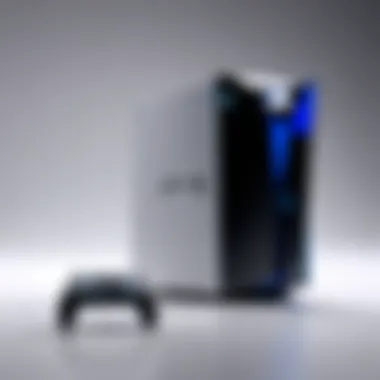
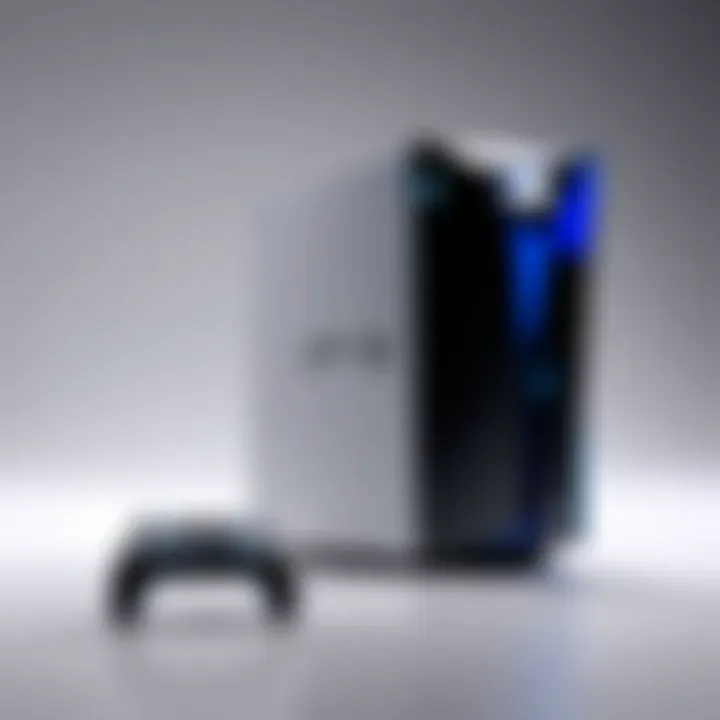
Technological Innovations
Technological innovations in gaming have transformed the landscape significantly, and the PlayStation 5 exemplifies this change. The release of the PS5 represents not just an update but a leap forward in gaming technology. Important elements of innovation within this console include hardware specifications and software features that dictate the overall user experience.
Hardware Specifications
The hardware specifications of the PS5 are vital to its appeal and performance. At the core of the system is a custom AMD CPU based on the Zen 2 architecture. This processor offers enhanced performance, capable of delivering high-speed processing while minimizing power consumption. Coupled with a custom RDNA 2 GPU, the PS5 can support ray tracing technology, bringing more realistic lighting effects to games.
Additional notable specifications include 16 GB of GDDR6 RAM, which ensures smooth and responsive gameplay even in resource-intensive scenarios. The ultra-fast SSD significantly reduces load times, allowing for more seamless transitions within game worlds. Overall, these hardware advancements not only enhance graphics but also facilitate more complex game mechanics, enriching gameplay experiences.
Software Features
Along with hardware improvements, the PS5 introduces several groundbreaking software features, aiding both gamers and developers. The user interface has been redesigned to improve accessibility and ease of navigation. PlayStation 5’s system software includes activities that allow players to jump directly into specific missions or challenges without lengthy load times.
Moreover, the DualSense controller features haptic feedback technology, which provides users with tactile sensations during gameplay. This innovation is significant because it allows players to feel different textures and physical effects, thereby deepening their immersion.
The integration of cloud gaming capabilities expands access to games, allowing players to stream titles instead of downloading them, which can save storage space. Additionally, the console supports backward compatibility for a selection of PlayStation 4 titles, which enhances its library and offers more options for gamers.
As gaming technology advances, the PS5 stands out not just as a machine for playing games but as a comprehensive gaming ecosystem that supports innovation at every level.
Overall, the technological innovations found in the PS5 push the boundaries of what gaming consoles can achieve, setting new standards within the industry.
Comparisons with Competitors
When discussing the release of the PlayStation 5, it is crucial to analyze how it stacks up against its primary competitors in the gaming market. These comparisons reveal a lot about consumer preferences, technological advancements, and even industry standards. Understanding the PS5 in relation to its rivals provides insights into its market position and the decisions made by its developers. This section focuses specifically on the Xbox Series X and Nintendo Switch. Evaluating these competitors helps highlight the strengths and weaknesses of the PS5, illustrating its appeal to a broad range of gamers.
Xbox Series
The Xbox Series X, released by Microsoft, is the PlayStation 5's most direct competitor. Both consoles aim to offer high-performance gaming experiences, but there are notable differences to explore.
- Hardware and Performance:
- Backward Compatibility:
- Game Pass vs. PlayStation Plus:
- The Xbox Series X is equipped with a custom AMD processor delivering 12 teraflops of processing power. This has allowed the console to achieve impressive graphical fidelity.
- In comparison, the PS5 offers a performance of 10.28 teraflops. While both systems perform well, some gamers prefer the enhanced power of the Xbox.
- Xbox Series X supports an extensive library of Xbox One, Xbox 360, and original Xbox games. This feature appeals to players with existing collections.
- PS5 also provides backward compatibility but only for a limited range of PS4 titles. This distinction can affect consumer choice, particularly for gamers who value their libraries.
- Xbox Game Pass subscription provides access to a vast catalog of games, including new releases on launch day. This service has become a vital selling point for the Xbox console.
- In contrast, PlayStation Plus offers free games each month but typically does not provide day-one access to new titles. This difference highlights a potential gap in value for subscription-based models.
Nintendo Switch
The Nintendo Switch operates in a different niche than both the PS5 and Xbox Series X, but comparisons are essential to understand the gaming landscape.
- Form Factor:
- Exclusive Titles:
- User Demographics:
- The Switch's hybrid design allows it to function as both a home console and a portable device, providing versatility for gamers. This unique aspect offers a different gaming experience than the stationary PS5.
- PS5, primarily a home console, relies on traditional gaming functions and lacks portability.
- Nintendo is known for its iconic franchises like Mario, Zelda, and Pokémon, which consistently draw fans to their platform. Many gamers invest in Nintendo hardware for exclusive content.
- While PS5 has its exclusive titles such as Demon's Souls and Ratchet & Clank: Rift Apart, these franchises cater to a different audience, often focusing on mature themes.
- Nintendo's approach tends to attract a family-friendly audience and younger gamers.
- PS5 often aims at a slightly older demographic, focusing heavily on immersive experiences in more complex narratives.
Overall, the comparisons with the Xbox Series X and Nintendo Switch demonstrate the diverse landscape of gaming. Each console appeals to different segments of the gaming market, and the PS5 carves out its niche by blending cutting-edge technology with a strong lineup of games.
While some consumers may prefer the Xbox for its performance capabilities or the Switch for its portability, the PlayStation 5's unique offerings play a crucial role in shaping the future of gaming.
Consumer Reception
Consumer reception is an essential aspect of understanding the impact of the PlayStation 5 on the gaming landscape. This section will highlight the various elements that contribute to how the PS5 was perceived by its users. The feedback left by players provides valuable insights into both the strengths and weaknesses of the console.
User Reviews
User reviews of the PS5 are a crucial factor in gauging its reception. Many players expressed their enthusiasm for the new console, praising its performance and graphical capabilities. The feedback can be categorized into several themes:
- Performance: Users often highlighted the speed of the SSD, which dramatically reduces loading times. This feature enhances gaming experiences, making transitions smoother between levels and scenes.
- Graphics Quality: The PS5's ability to display games at high resolutions and frame rates astounds many. Players noted a significant improvement in visual fidelity compared to previous generations.
- DualSense Controller: Many reviews focused on the innovative features of the DualSense controller, particularly its haptic feedback and adaptive triggers. Users found these advancements to create a more immersive experience.
Despite the positive feedback, there were also concerns raised. Some users reported issues with limited storage and availability of certain games at launch. The mixed reviews enable potential buyers to have a balanced understanding of what to expect with the PS5.
Critical Acclaim
Critical acclaim plays a significant role in how consumer reception is formulated. Industry critics, gaming outlets, and publications reviewed the PS5 extensively, focusing on various components:
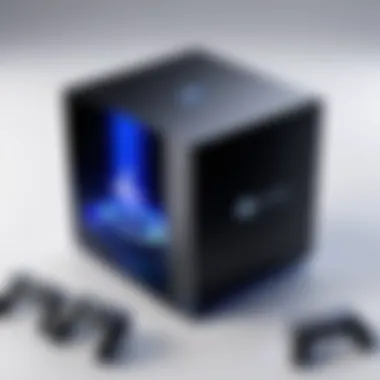
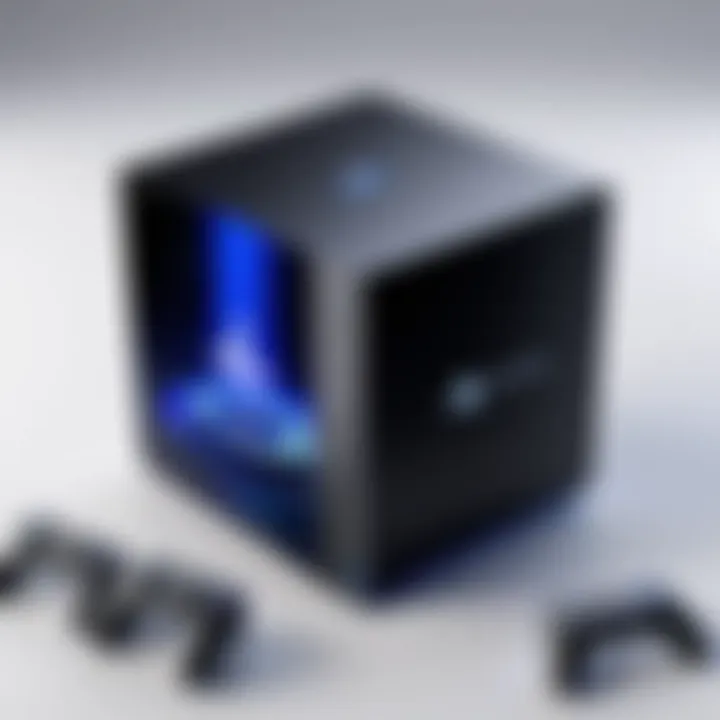
- Game Library: Critics recognized the quality and quantity of launch titles available for the PS5. Exclusive games, such as Demon's Souls and Spider-Man: Miles Morales, received high praise for their gameplay and visuals.
- Backward Compatibility: The ability of the PS5 to play older PlayStation 4 games was noted as a crucial selling point. This aspect enhanced the appeal for those migrating from previous generations, allowing them to continue enjoying their favorite titles.
- User Interface: The simplicity and responsiveness of the PS5's user interface garnered positive feedback. Critics emphasized the ease of access to games and features, enhancing the overall user experience.
Challenges Post-Launch
After the anticipated release of the PlayStation 5, several challenges surfaced that impacted both consumers and the gaming industry as a whole. Understanding these challenges is crucial for an overall comprehension of the console's broader implications. These challenges mainly revolve around supply chain issues and software launch bugs, both of which have shaped user experience and brand perception.
Supply Chain Issues
One of the most pressing challenges faced during the post-launch phase involved supply chain disruptions. The global pandemic added a layer of complexity to the already intricate logistics surrounding the production and distribution of the PS5. Sony had secured many components, but the demand surged far above expectations, leading to significant shortages.
Many fans were eager to get their hands on the new console, causing frantic buying behavior. Retailers struggled to keep up, often leading to empty shelves. Compounding the problem, reports indicated that many users were engaging with third-party sellers, raising prices significantly above the standard retail price.
- Manufacturing Delays: Factories operating at reduced capacity contributed to fewer consoles available at launch.
- Transportation Issues: Worldwide shipping interruptions delayed deliveries, affecting retailers and consumers alike.
- Market Demand: The sheer popularity of the console magnified these issues, making it difficult for potential buyers to acquire the PS5 without resorting to exorbitant prices.
These supply chain issues not only frustrated consumers but also posed a challenge for third-party developers who relied on a steady user base to enhance game availability and quality.
Software Launch Bugs
Another significant challenge that surfaced was the presence of software bugs at launch. Despite extensive testing, the complex nature of software development led to several issues that were evident shortly after the PS5's release. These bugs affected system performance and, in some cases, disrupted gameplay experiences for users.
Some notable concerns included:
- Game Crashes: Certain titles experienced crashes that often required restarts of the system.
- Update Failures: Issues with firmware updates led to frustration among users who were unable to optimize their console for the latest features.
- Compatibility Problems: Players encountered difficulties with older PlayStation titles, creating confusion regarding backward compatibility claims.
The presence of these software bugs highlighted the necessity for ongoing support and updates. Sony committed to addressing these issues through patches, aiming to restore user trust and satisfaction. In the long term, these challenges have emphasized the importance of thorough testing and continuous improvement in software development and user experience.
Future of PlayStation
The future of PlayStation is a crucial aspect of this article. Understanding how Sony plans to evolve the PlayStation brand helps consumers and developers see upcoming trends and opportunities in gaming. The PS5 serves not only as a powerful gaming console but also as a platform that sets the stage for future innovations and community developments.
Upcoming Titles
The upcoming titles for PlayStation 5 are highly anticipated. Several game developers are working on exclusive games, which are expected to leverage the advanced hardware capabilities of the console. Titles like Horizon Forbidden West and God of War Ragnarök exhibit the potential of what players can expect in terms of graphics and gameplay.
Moreover, third-party developers also play a role. Many studios are creating games that take advantage of the PS5's unique features, such as low load times and enhanced graphics. Players are eagerly awaiting announcements from major franchises. Keeping an eye on the PlayStation Showcase events can provide insights on what to expect in the near future.
Long-term Impact
The long-term impact of the PS5 on the gaming industry cannot be understated. Its release has triggered a shift in how games are developed and consumed. More developers are focusing on cross-platform functionality, given the PS5's powerful ecosystem. This trend could lead to a more interconnected gaming world, where players on different platforms can engage with each other seamlessly.
Another significant factor to consider is the potential for hardware upgrades. As technology continues to advance, future iterations of the PlayStation may include new features that further enhance user experience.
"The impact of the PS5 on gaming culture will be felt for many years. Its innovations set expectations not just for consoles, but for the gaming industry as a whole."
In summary, the future of PlayStation looks promising. With exciting upcoming titles and a significant long-term influence on the gaming landscape, both gamers and developers have much to anticipate. This commitment to innovation secures PlayStation's position as a leader in the industry.
Ending
The conclusion of this article serves as a pivotal reflection on the significant milestone that the release date of the PlayStation 5 represents in the broader gaming landscape. It not only marks a technological advancement but also embodies the culmination of consumer expectations and industry hype. The PS5's entry into the market reshapes the interaction between players and the gaming ecosystem, highlighting how crucial it is to understand this timing in context.
Within this section, we review the various essential elements that underscore the importance of the release date. Firstly, it signifies the strategic positioning of Sony in a competitive environment filled with high consumer demand. The exact date can influence market dynamics, including the reaction from competitors, as well as consumer buying behaviors.
Another key consideration is the benefit that consumers reap from the PS5's release. Gamers were eager for new content and powerful hardware, which the PS5 promised. Understanding this release date clarifies the anticipation that characterized the period leading up to launch and the subsequent reaction from the gaming community.
Moreover, this reflection provides insight into the long-term impact on PlayStation's future and its legacy in gaming culture. How the market responded to the PS5's launch sets a precedent for upcoming releases and consumer expectations in the years to follow.
Reflections on Release Date Impact
The release date of the PS5 is not merely a point in time; it has various implications for both the industry and consumers. The timing of this event is significant in how it affected the sales trajectory of not only the PS5 but also its direct competitors, such as Microsoft’s Xbox Series X. Examining this aspect provides a deeper understanding of the market trends that followed.
On the consumer side, the anticipation surrounding the PS5 release served as a powerful marketing tool. It stimulated discussions across platforms like Reddit and Facebook, and creating a community around the launch. These conversations played an integral role in shaping expectations and showcasing the features that players were most passionate about.
"The PS5 represented a shift not just in technology but also in how we experience gaming as a culture."
Additionally, the performance of the PS5 in the market post-launch and its reception are closely tied to the impact of the release date. It acted as a catalyst for various discussions about graphics, gameplay, and overall user experience, which continues to influence consumer choices today. This reflection ultimately emphasizes the release date's critical role in the ongoing narrative of gaming advancements.
Appendix
The appendix serves as a crucial component in this article as it allows readers to dive deeper into the topics covered throughout. It provides additional resources and references that enhance the understanding of the PlayStation 5's release context. This section ensures that none of the information shared becomes insular. The appendix also recognizes that readers may want to explore beyond the immediate text, offering pathways to broaden their insights.
Further Reading
This section presents options for readers who are looking to expand their knowledge and dive deeper into the world of gaming and the PlayStation brand. Suggested reading might include:
- Books on gaming culture and its evolution, offering a historical perspective.
- Online articles from Wired or Kotaku discussing the ongoing impact of consoles on player behavior.
- Forums on Reddit where enthusiasts discuss upcoming titles and their significance.
By engaging with these resources, readers can develop a more nuanced understanding of gaming industry dynamics surrounding the PS5. This section ultimately illustrates that the discussion extends beyond the PS5 itself and into the larger narrative of gaming technology and consumer behaviors.



